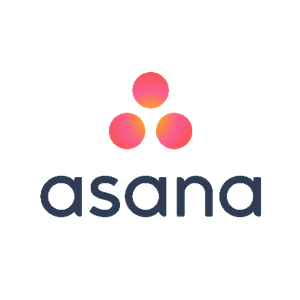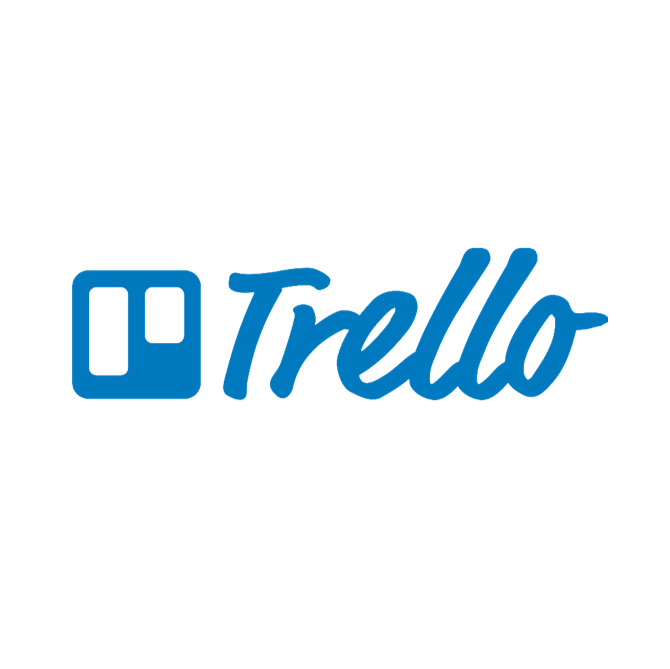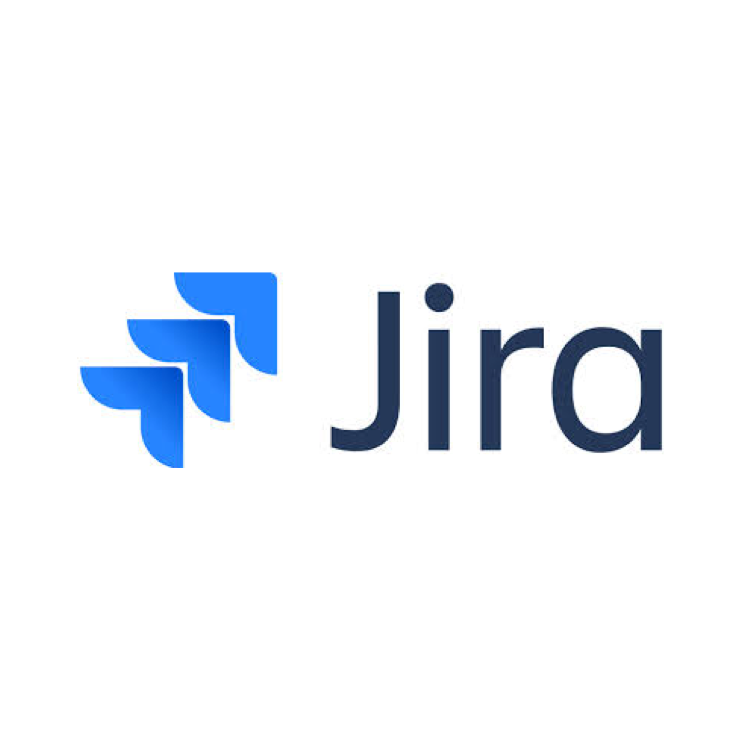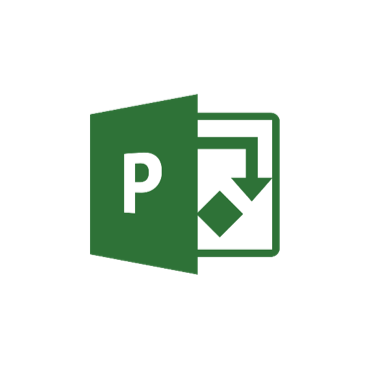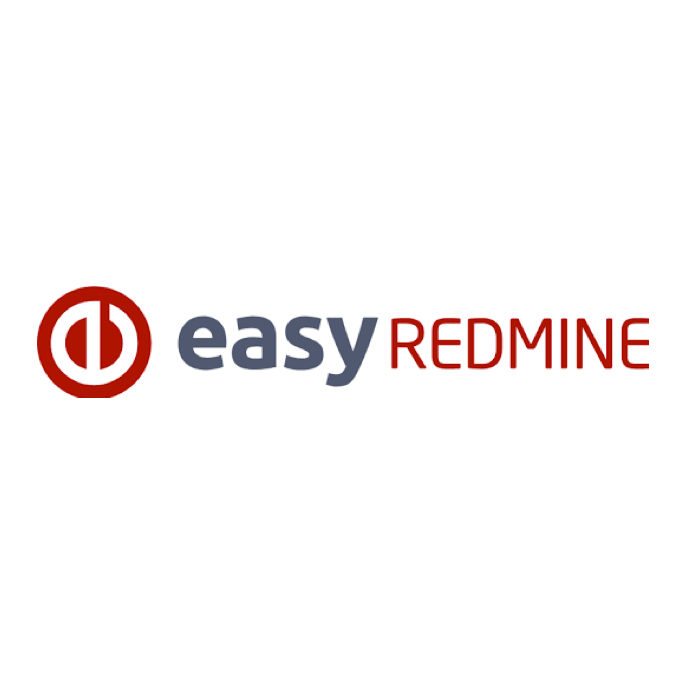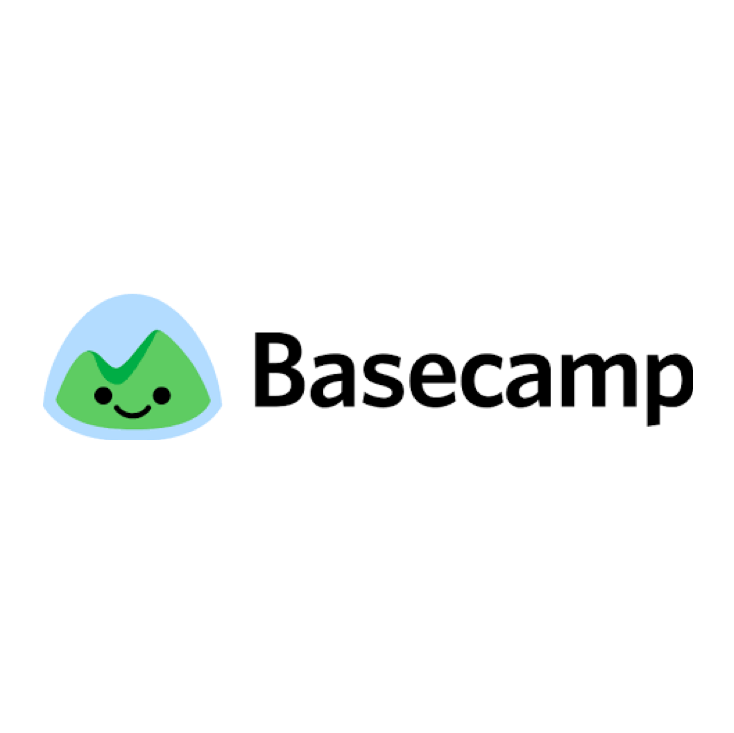What’s The Best Project Management Tool For My Business?
Using the right project management tool can be the difference in your project’s success.
The vast amount of software available that claims to do the same can make choosing the right tool an overwhelming task.

A quick Google search tells you the most used programs, but that doesn’t mean that it is the right one for you and your team.
Remember that not everyone has the same needs.
Some businesses just need to-do lists, others need something that will analyze their data, while there are some that just need a simple way to invoice their clients.
Of course there are teams that need every of those things and more. You have to know what you’re looking for.
Unfortunately there’s not enough time (and sometimes not enough money) to try every project management software available and decide based on which one you actually liked.
So, the question is simple: according to my business’s needs which is the best project management tool available?
In this article we’ll be reviewing several project management tools and comparing them with each other.
Table of Contents
We hope that you’ll be able to make an informed decision regarding what’s best for you, whether you need something simple or a more sophisticated solution.
But enough talking, let’s get down to it.
1. Asana
Available since 2011, Asana is one of the simplest management tools available in the game. Despite its simplicity, this project management tool is used by big-name clients, such as Dropbox or Pinterest.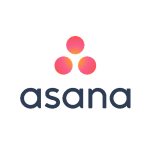 What it lacks in functionality, Asana makes up in its pricing — it’s one of the most affordable tools available.
What it lacks in functionality, Asana makes up in its pricing — it’s one of the most affordable tools available.
Although it’s better suited for smaller teams, Asana can help you divide huge projects into smaller tasks and plan your projects months into the future.
Asana helps you streamline your projects and optimize your time, getting rid of those pesky morning meetings to discuss your project status.
Emails and chats can all be done through Asana.
Powerful To-Do Lists
Asana’s approach to project management is very simplistic. At its core it’s pretty much a complex to-do list creator.
However, it manages to accomplish quite a lot with simple to-do lists.
Everyone knows that lists are one of the best ways to organize everything and that’s why there’s practically no way around them.
Almost every project management tool includes ways of creating to-do lists.
None of them does it as good as Asana.

Each to-do list you create with Asana works as an individual project.
You can then create tasks within the list, as well as subtasks within each task.
You can attach files to tasks and mark them with tags so you can search them easily at a later point.
If you’re not a big fan of the traditional to-do list visual, Asana offers you the possibility to display the list on a Kanban board.
 Or you can even display your to-do tasks in a calendar view.
Or you can even display your to-do tasks in a calendar view.

However, some of those display modes can become a problem when you have a high number of team members working on the same project.
Everything becomes cluttered and of difficult reading.
That’s one of the reasons why Asana works best with smaller teams.
Easily Accessible
There’s no need to download Asana.
Being web-based, Asana works on your browser.
If you need to constantly be updated on the go, Asana also offers free apps for both Android and iOS.
If you can’t access the app, you can access Asana through your phone’s browser.
Although not as complex as the desktop version, the mobile version lets you create tasks, attach files and check your inbox.
Asana’s design also makes it intuitive. Since it’s not a very complex tool, what you see is what you get.
With Asana there will be no need to troll the internet looking for detailed how-to guides.
No Need for Morning Meetings
With it’s built-in progress tracker, Asana eliminates the need for project status meetings.
You’ll always know how far ahead (or behind) you are on your project. With Asana you’ll also have several forum-like chatrooms, called “Conversations”.
Each project will have its own Conversation, and each team will have their own Conversation as well.
Conversations allow your team members to quickly send notes to one another or to post topics other team members can reply to.
Integrate Your Favorite Apps
Asana lets you integrate a large number of commonly used apps, such as:
- Google Chrome
- Dropbox
- GitHub
- WordPress
- Zendesk
- Evernote
Plus many others.
Detailed User Guides
As you would expect from any business related app, Asana offers detailed user manuals that will help you getting started with Asana.
The manual consists of video tutorials, frequently asked questions, user tips and extensive written guides.
Customer Support Network
Whatever you can’t find in the user manuals, Asana’s dedicated team will help you with.
Within 24 hours you’ll have an answer to your problems.
Even though Asana’s not a very complex tool (that doesn’t mean it isn’t powerful), they will help you with any non-documented concern you might have.
Pricing
Its competitive pricing is without a doubt one of Asana’s biggest advantages.
The premium version only costs $9.99 per user per month. If your team has less than 15 members, you can even use the free version.
As you would expect, one of the drawbacks of the free version is its restricted functionality, however it can be enough if you’re new to the game and needing help with your smaller projects.
There’s the possibility to try the premium version before you buy it. Free trials are always a plus.
If you opt for an annual billing you can get two months for free. You can pay with any credit card, or, if your team has more than 50 members, you can send them an invoice.
Asana also offers a Enterprise version, with even more in-depth functionality.
The Enterprise version is priced on a case-by-case scenario, and you need to contact Asana in order to know how much it would cost you.
Free
teams up to 15 members- Unlimited tasks, projects, and conversations Up to 15 team members Basic dashboards Basic search
Premium
- Everything included in the free version Timeline No team member limit Unlimited dashboards Advanced search and reporting Custom fields Task dependencies Comment-only projects Private teams and projects Start dates Admin controls Customer success webinars Priority Support Google SSO
Enterprise
- Everything included in the premium version Ability to manage team members with advanced admin controls Specialized help from their customer success team Same day support Strict control over data and security Data deletion Cross-regional backups Possibility to customize Asana with your custom branding
Final Verdict
Pros
- One of the cheapest options Excellent for smaller teams Free if you have less than 15 members Clean and sleek interface Possibility to use it on the go with the phone app App integration Multiple display views Simple and easy to use Powerful to-do lists
Cons
- Some teams might find it too simple to be worth its price Glorified to-do list creator (it’s both a pro and a con, depending on what you’re looking for) Sometimes might be a little counterintuitive
2. Trello
Trello is also a straightforward project management tool, designed to help you and your team with your workflow. Due to its highly customizable (and simple) card-based interface, you can optimize it to have everything you need just a few clicks away.
Due to its highly customizable (and simple) card-based interface, you can optimize it to have everything you need just a few clicks away.
Although it functions relatively well with large, multi-personnel projects, there’s no doubt that Trello is better suited for small and medium businesses.
Trello’s drag-and-drop feature makes it very intuitive.
You can prioritize your team’s tasks just by dragging what’s more important to the top, or you can assign team members to a specific project by dragging their icon into the project’s.
Highly Visual and Intuitive
Trello is based around a heavily customizable Kanban board.
Each board corresponds to a project, where specific team members can interact with it.
Team members assigned to a project (or to a board) can move the cards (we’ll get to it) around the board, add members and attachments and create checklists.

Boards are made up of lists like the ones you can see in the picture.
Lists are usually used as divisions between the several stages of a project, but they can be used whichever way you see fit.
You can create as many lists as you see fit for your project. There’s really no limit.
At every price point, Trello comes with the ability to create unlimited boards, lists, and cards.

But what exactly are cards?
Cards are one of the most basic parts of Trello.
They can be used as the actual tasks inside each list.
As you prioritize certain tasks, Trello’s drag-and-drop feature allows you to push a particular task to the top or to the bottom of the list, as well as changing it to a completely different list.
When it comes to complexity in the Trello ecosystem we have: Boards > Lists > Cards.
But it doesn’t end there.
Cards aren’t as basic as they look.  As you can see, cards are a little bit more complex than they might seem at a first glance.
As you can see, cards are a little bit more complex than they might seem at a first glance.
Team members can add labels and attachments to cards, as well as assign due dates and other members.
Although you can use cards as tasks, team members can also create checklists inside each card, giving the system a matryoshka-like complexity.
As Simple as Dragging and Dropping
If there’s something every project manager loves is when things work they way they should.
Trello is super simple to learn and intuitive at every level due to its drag-and-drop feature.
Want to add a team member to a particular board?
Drag his icon into the desired board.
Want to assign him to a card? You know what to do.
Is the task complete and you want to move it to the “Complete” list?
Just drag the card and drop it on the aforementioned list.
There’s really not enough praise to be had by this simple, yet time-saving feature.
Always Moving Forward
Trello is project management made simple.
Everyone assigned to a board can see the same lists and the same cards, so confusion around the office becomes minimal.
Everyone knows what they’re supposed to do.
Flexible and smaller teams constantly being assigned to new projects will have their life way less complicated with Trello.
It’s the ideal tool for businesses with projects based around different teams collaborations.
Don’t Switch Tools While Working
Trello really focuses on you and your team maintaining your workflow, and having to tab in and out of several different programs and applications can be very prejudicial to your project’s efficiency.
That’s why you can integrate in Trello hundreds of applications.
You can easily attach your favorite and most used applications to boards quite easily, ensuring you and your team don’t waste precious time.
Trello’s integrations include applications such as:
- Google Drive
- Timecamp
- Dropbox
- Jira
- GitLab
- Slack
And many more.
Power-up Your Project
There are hundreds of plugins for Trello.
Plugins and integration-able apps are called “Power-Ups” in Trello’s language.
If there’s a functionality you’re looking for but it isn’t natively supported, chances are there’s a power-up. for it.
Industry Tested
Trello’s simplicity makes it one of the more commonly used project management tools for small and medium businesses.
Teams all around the world love it:
“I use Trello for most things. I like it because it’s very simple and flexible” — Andrew McDonough, CTO
“It’s flexible, extensible and easy to use” — Steffen Larsen, CTO
Pricing
One of the most attractive Trello’s features is the fact that the basic version is completely free.
If you want to use Trello’s premium features you can sign for the Business Class package for as little as $9.99 per user per month (as long as you’re billed annually).
If you want to get even more out of this powerful project management tool, then you can sign up for the Enterprise version, which comes at $20.83 per user/month.
Unsure on which version you should choose? Let’s look at the features you can find at the three different price points:
Free
- Unlimited boards, lists, checklists, cards, members, and attachments Integrate one application per board Attach files up to 10MB from your computer, or link any file from your Google Drive, Dropbox, Box, or OneDrive
Business Class
- Everything included in Free Unlimited integrations Attach files up to 250MB Group and organize all of your team’s boards with Collections Maintain control with immediate, one click access removal for former members Stay secure by controlling who can create public or private boards Keep company information private with restricted membership invitations Add personality with custom board backgrounds and stickers Priority email support with guaranteed 1-day response during business hours
Enterprise
- Everything included in Business Class Single Sign-On available for all SAML IdPs 2-Factor Authentication to keep your work data secure Personalized onboarding assistance to aid in adoption, migration and execution of all materials Priority email and phone support with guaranteed responses in less than 1 business day Comprehensive legal contract review and enhanced SLA File encryption at rest Intrusion detection with enhanced software monitoring Custom security review
Final Verdict
Pros
- Simple and intuitive interface Drag-and-drop saves time Hundreds of available apps integrations Basic version is free regardless of your team size Highly customizable
Cons
- Dependency on “power-ups” will make you quickly outgrow the free version No Gantt charts (although there are several plugins available) Personalized onboarding assistance only available at the highest-cost plan At the end of the day it’s just a Kanban board (although one of the best, if that’s what you’re looking for)
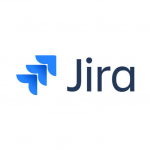 Besides offering Kanban workspaces, Jira also offers its users Scrum and Agile planning boards.
Besides offering Kanban workspaces, Jira also offers its users Scrum and Agile planning boards.
Jira increases your team’s workflow by helping them plan their project, track their progress and squash bugs that might arise.
Jira is best suited for big software development teams and it makes software deployment and integration within your company easier.
Function Over Form
Jira doesn’t have a sleek and modern interface like some of its competitors.
Although it is functional, It’s not as intuitive as other options on the market.
There’s a steep learning-curve to this software due to all the things it offers, but when you finally understand it you’ll see that it’s a life saver.
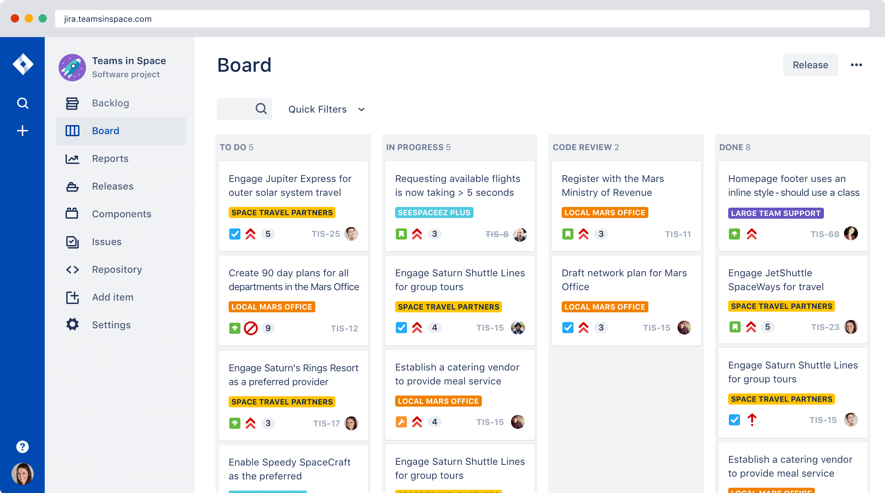
It can be overwhelming when you first look at the dashboard, but as you analyze it you can see that Jira offers things that other project management tools don’t, such as the ability to track sprints.
Software teams can plan their sprints and constantly check their progress.
All of the reporting tools available give your team valuable data regarding the progress of your project.
Jira also works with a number of development tools that help you track changes to your code and to your builds, providing all of the necessary context.
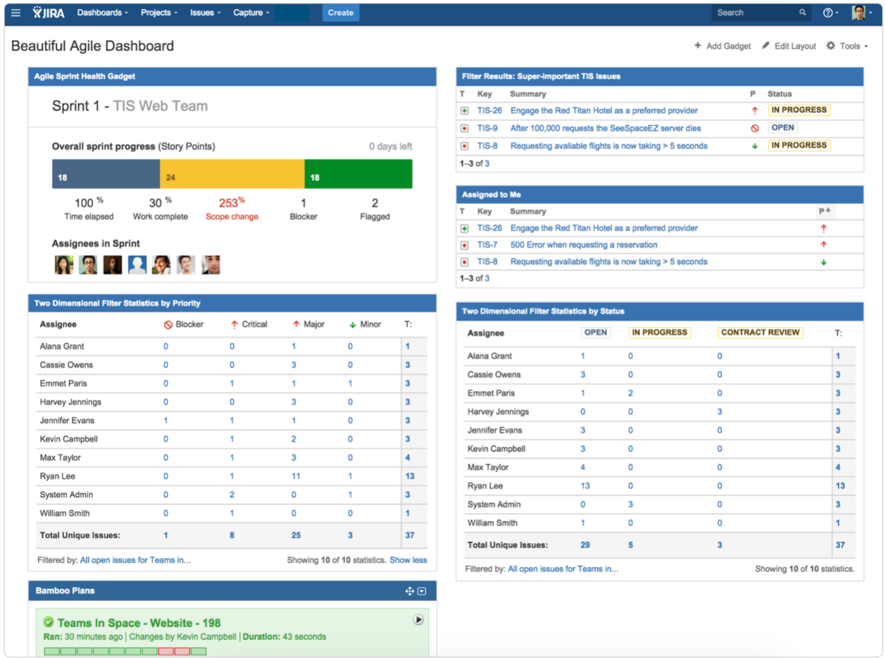
Jira lets you create multiple workspaces and within each workspace you can create multiple sprints, allowing you to constantly monitor them.
You can know what is currently being done, what has been finished, and what still needs to be started.
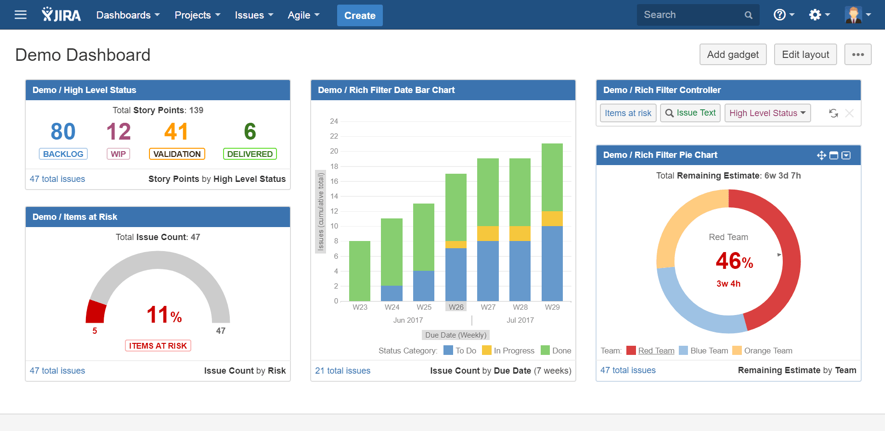 Jira’s dashboard offers users detailed reports of their projects.
Jira’s dashboard offers users detailed reports of their projects.
Things like burndown charts and time tracking are always just a few clicks away.
It also lets work pass from one member to another without any manual input.
Workflows can be automated and you can check their data with hundreds of their integrated apps.
Constant Project Tracking
So your team can jump straight into it, Jira offers preset agile workflows that work straight out of the box.
As you begin to understand the program you can start fine tuning your dashboard to optimize your workflow.
Just remember that its target users are software developers.
Jira also has a time tracking feature, allowing your team to keep track of time during sprints.
Team members can easily monitor their due dates and the time they have left to finish a particular task.
Bug Squashing Simplified
Issue tracking allows you to see everything that’s wrong with all of your projects at once.
If you have issues in several different projects they will all appear in the same place.
That way you can immediately know what’s wrong and needs to be fixed ASAP without having to jump back and forth through all of your projects. 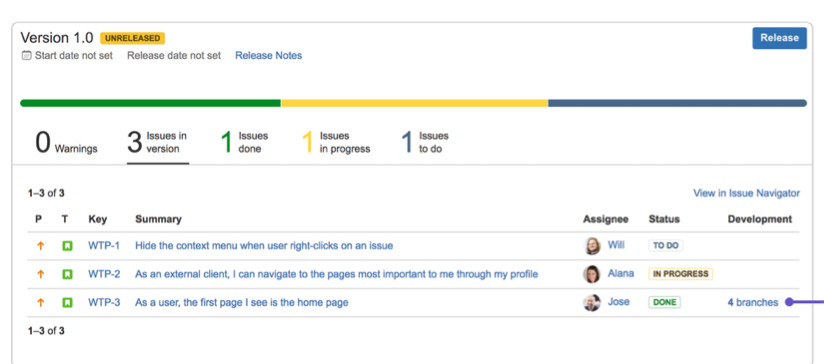 You can assign team members to each bug ticket and designate its priority level.
You can assign team members to each bug ticket and designate its priority level.
Assigning each bug’s priority level is as easy as dragging and dropping what’s most important to the top.
As the bug squashing progresses, team members receive notifications of changes made and are always kept up to date.
For Agile Projects
Jira’s Scrum boards help teams deliver on their projects through iterative and incremental steps.
Tracking daily scrums and important milestones along the way are a given with Jira.
Burn-down and up charts, as well as velocity charts and sprint reports are just some of the data that team members have access to straight away.
There are several plugins you can install that give you access to even more detailed data that’s not available natively, such as Gantt charts.
Despite being with agile teams in mind, Jira also lets users choose Kanban-type projects, so you’ll always have the project type that suits your needs.
Plugin Bonanza
Jira has over 1.800 available plugins.
If there’s something you’d like Jira to do, but there’s nothing that indicates that Jira’s capable of it in the documentation provided, chances are there will be a plugin for it.
By browsing Atlassian’s website (Jira’s developers) you can look for that plugin that you desperately need.
Pricing
If you’re looking for a cloud based solution and if your team has 10 members or less, Jira will cost you a $10 monthly flat fee.
If you’re going to need to have up to 100 users, then Jira will cost you $7 per user/month.
Jira’s cloud services support up to 2.000 users and you should use the calculator on their website in order to know how much it would cost you per month if you need more than 100 users.
The more users you need, the lower the price per user is.
If you’re not sure if you’re going to get your money’s worth, Atlassian offers you the possibility to try Jira for free for 7 days.
You don’t even have to insert a credit card. If you’re looking to host your own Jira server and only have 10 or less team members, then it’s only going to cost you a one-time payment of $10.
However, prices quickly rise if you need more team member slots.
Hosting your own 25-user Jira server will set you back $2.000.
Luckily, it’s a one-time payment as well.
If you want to host your own Jira server here’s how much it’s going to cost you based on the amount of users you need:
| Max number of users | Price (one time payment) |
| 10 | $10 |
| 25 | $2.000 |
| 50 | $3.600 |
| 100 | $6.600 |
| 250 | $13.200 |
| 500 | $19.800 |
| 2.000 | $26.400 |
| 10.000 | $33.000 |
| 10.001+ | $39.600 |
Final Verdict
Pros
- Great for software teams Free 7 day trial High number of plugins Mostly bug free Agile, Kanban and Scrub project types Helps you track everything Streamlines bug squashing Works great with huge teams Available at several price points
Cons
- Not very intuitive Steep learning-curve Expensive to run your own servers
4. Easy Redmine
Easy Redmine is an open-source, Redmine-based, project management tool. Easy Redmine and Redmine are two different applications. Easy Redmine can be seen as an upgraded version of Redmine.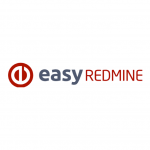 This upgraded version of Redmine adds extra features and has an increased functionality over the vanilla app.
This upgraded version of Redmine adds extra features and has an increased functionality over the vanilla app.
Easy Redmine overhauls the user interface and adds plenty of extra tools.
Easy Redmine is best recommended for teams with up to 100 members.
Improved Interface
Easy Redmine redesigns Redmine’s interface into a cleaner, more intuitive and functional one.
Just by checking Redmine’s website you can see that they have don’t really care about their presentation, focusing instead on delivering a great product.
Easy Redmine delivers an improved version of an already great product and turns it into something you actually don’t mind looking at.
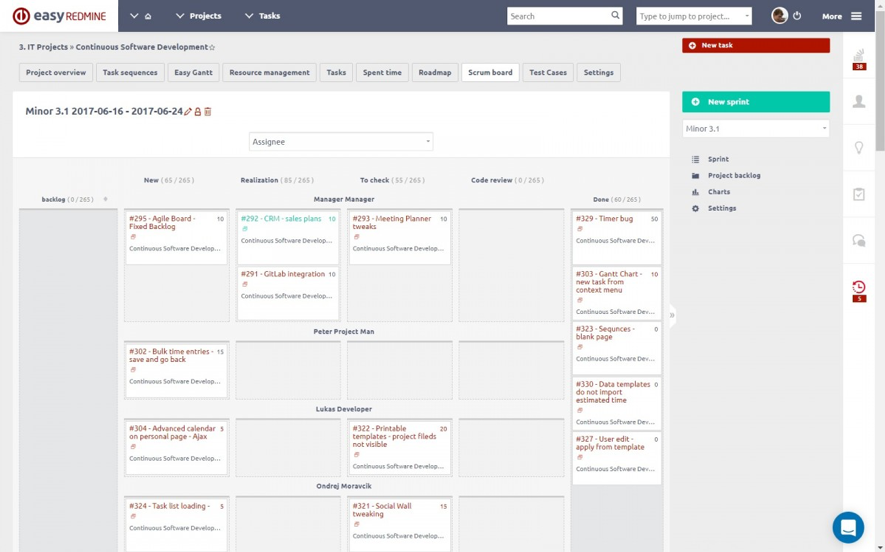
Choose Your Project Type
With the right packages, Easy Redmine allows you to do Agile projects or traditional ones and apply them to Kanban or Scrub boards, depending on your preferences.
Easily Manage Everything
Easy Redmine becomes your one-stop for all of your management needs.
This project management tool allows you to manage your budget, your resources and even your ideas.
It also helps you managing your milestones and time spent on a particular project without the need of any extra plugins.
Suits Your Needs
Easy Redmine features hundreds of plugins that will help you customize your project management experience.
Easy offers their Easy Redmine users several different packages so they can turn the platform their own.
Easy bundles several Easy Redmine plugins for specific needs such as:
- Project budget and cash flow
- Payroll and invoicing
- Project price calculation
- Test cases
- Customer care
And many others.
Updates on the Go
Easy Redmine offers mobile apps for both iOS and Android operating systems.
That way you’re able to keep updated on your projects wherever you are.
Easy Redmine users also have access to their API and can choose to have a cloud-based solution or to host Easy Redmine on their own servers.
Pricing
As usual, Easy Redmine offers several price points and cloud-based or self-hosted options.
The basic small team package starts at $29 per month when billed annually and supports up to 25 users.
However, added functionalities (plugin packages) come with an added price.
Costing on average $29 per package.
Here are Easy Redmine’s pricing options for cloud solutions:
| Max number of users | Price (per month) |
| 25 | $29 |
| 50 | $49 |
| 100 | $99 |
| 101+ | Case-by-case basis |
And, if you’re looking to host your own Easy Redmine server:
| Max number of users | Price (one time payment) |
| 25 | $499 |
| 50 | $990 |
| 100 | $1990 |
| 101+ | Case-by-case basis |
Final Verdict
Pros
- Nice improvement on Redmine’s UI Good performance Easy to pick-up, difficult to master You can choose the packages that are the most convenient to you
Cons
- No keyboard shortcuts Can’t customize your boards Updates change layouts too frequently
5. Microsoft Project
Microsoft Project is probably one of the oldest project management tools available. Developed in the 1980’s, the fact that Microsoft Project is still widely used is nothing but a testament to its success.
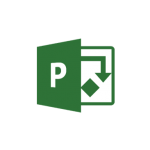 Even though there’s a large amount of project management tools available, MS Project is used by 67% of small businesses.
Even though there’s a large amount of project management tools available, MS Project is used by 67% of small businesses.
That means that it does something right.
Despite the fact that MS Project is not the best option for huge companies and larger teams, it manages to fulfill the needs of enterprise and small business owners, becoming a project management staple in the area.
The Same Old Interface
Microsoft Project shares its interface with the Microsoft Office suite.
If you know your way around Excel and Microsoft Word, then you’ll probably quickly figure out MS Project.
Although to be able to get the most out of it, you’ll probably need to read the provided documentation.
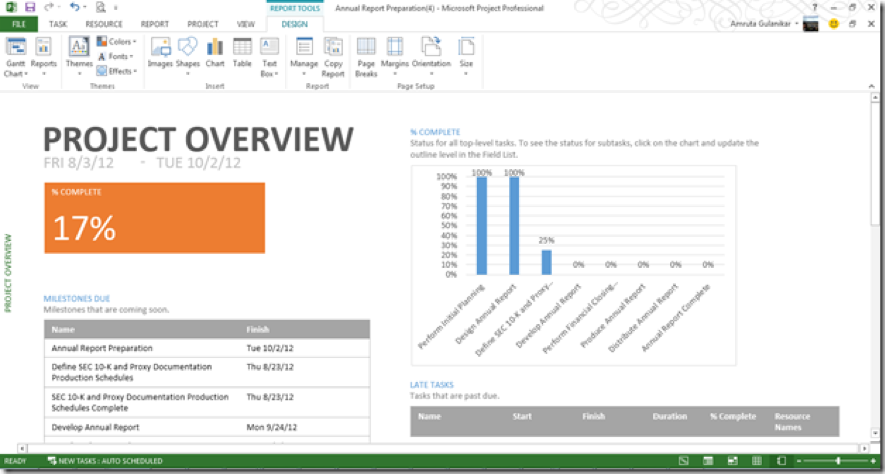
There are no fancy buttons or beautiful displays in Microsoft Project.
Everything is kept simple, but that doesn’t mean that it isn’t a powerful tool.
Just think about Excel’s apparent simplicity and all the things that it is capable of.
Manage Your Projects and Your Portfolios
Besides being a project management tool, Microsoft Project can also help you manage your portfolios.
Being fully integrated with Microsoft Power BI, you can get detailed reports and advanced analysis that will help you and your team to stay on track.
Agile-Capable
Microsoft Project couldn’t have survived for so long if it weren’t constantly updated. Since 2017 it’s Agile compatible.
You can display your projects in Kanban or Scrum boards, or you can do it the old-fashioned way.
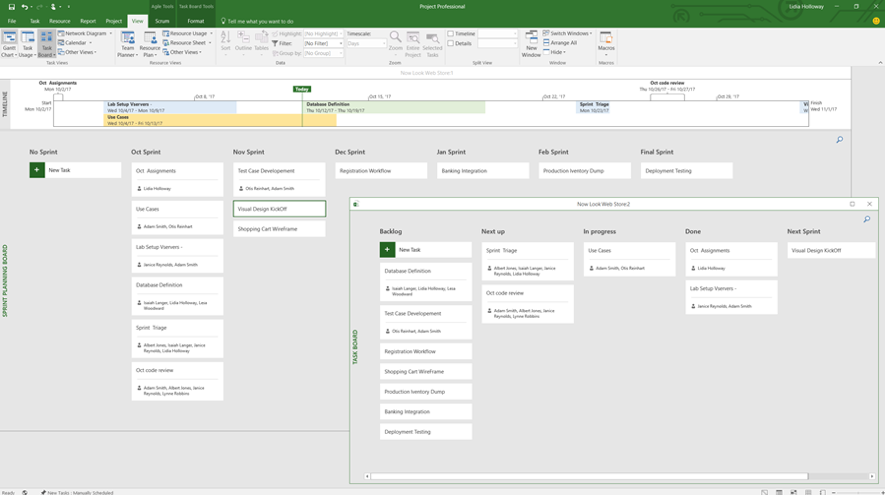
Get Started Quickly
As is common with other Microsoft products, Microsoft Project offers a variety of built-in templates that you can use to quickly get started.
You can create your own templates to use later, or you can download one that fits your needs from the internet.
Track Your Projects
Microsoft Project gives you full visibility of every project you’re currently undertaking.
MS Project comes out-of-the-box with the various tools, such as Gantt chart creators and time tracking instruments.
Its multiple timelines and milestone features allow you to actually measure your project’s progress across.
Different timelines can be assigned to different data and you can share it with your project’s stakeholders.
Microsoft Integration
Obviously, Microsoft Project takes full advantage of Office 365, offering full integration with a plethora of Microsoft’s products and services.
You can connect Microsoft Project to Skype for a better communication with your team members, or you can seamlessly export data into Word,
Excel or PowerPoint. Microsoft Project also offers users phone apps so they’re constantly updated about their project status.
Pricing
Microsoft Project comes in several tiers, each at a different price point and offering different functionalities.
When it comes to cloud-based solutions, Project Essentials costs $7.00 per user/month. It is the basic version of MS Project.
This version offers no desktop app access, being only accessible through your browser.
Project Professional will run you $30.00 per user/month, while the premium version will cost you $55.00 per user/month.
Unsure what’s the right option for you?
Let’s compare them:
Basic
- Team members can update task status, share documents and communicate on projects Users can submit timesheets to capture project and non-project time spent for payroll, invoicing and other business purposes
Professional
- Everything included in Basic Updated desktop application. Up to 5 PCs per user Plan projects with scheduling tools like Gantt charts and customizable templates Track and monitor project health, including everything from burndown charts to financials Save your projects to the cloud for ease of access and seamless collaboration between your team Assign resources to project tasks and request and lock in resources
Premium
- Everything included in Professional Manage demand by capturing and evaluating project ideas from anywhere in the organization through a standardized process Use advanced analytics to choose project proposals that best align with strategic goals and honor constraints Ensure optimal allocation of resources across projects Use out-of-the-box portfolio reports to gain portfolio performance insights
Final Verdict
Pros
- Large amount of templates Over 30 years of development and updates Industry standard Web and desktop applications Plethora of Office add-ins
Cons
- Can become overwhelming with large projects Price can become an issue Lack of eye-candy
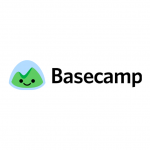 Featuring message boards, a native chat app as well as having file-sharing capabilities, Basecamp is one of the best project management tools if you require collaborations between several individuals.
Featuring message boards, a native chat app as well as having file-sharing capabilities, Basecamp is one of the best project management tools if you require collaborations between several individuals.
Intuitive Interface
Basecamp tries to keep everything simple.
It’s board-like display won’t overwhelm you and you’ll quickly figure everything out. Users can create their projects, as well as constantly update their progress and manage their tasks.
Since it’s web based, you can use it any where — as long as you have an internet connection.

With Basecamp you can have full visibility of every project your office is currently undertaking.
Tasks are clear and easy to read, and you can prioritize whatever you see fit at the moment.
Everything in One Place
Basecamp neatly organizes everything and quickly replaces the need for constant meetings.
Basecamp features forum-like message boards, as well as a dedicated messaging client.
With Basecamp you can also create your to-do lists and update your schedules, so you can always be prepared for what’s next.
It’s file-sharing and storing capabilities will also prevent you from rummaging around the computer looking for that particular email that you can’t seem to find.
Basecamp brags about being a substitute for 4-5 apps, such as: Slack, for the real-time chat; Asana Premium, for the to-do lists; Dropbox, for its file storing capabilities; and Google Suite, for Google Docs and calendar function.
For Simple Tasks
Basecamp can help you alleviate your headaches due to standard office proceedings, such as meetings and constant emails, but it can’t offer you much more.
Basecamp is for simple tasks.
There’s no Agile nor anything of the like. Basecamp is best suited for small businesses or non-profits where teamwork and collaboration is key.
3rd Party Integrations
Even though Basecamp keeps simplicity to the max, it has dozens of integrations with third party tools.
From mobile and desktop apps to time tracking, invoicing and accounting, these integrations will turn your standard Basecamp experience into something else entirely.
Free for Students and Teachers
If you’re a student or a teacher, Basecamp offers you their software for free — as long as you promise you won’t be using it for non-educational matters.
They also offer discounts to non-profit organizations.
Pricing
Basecamp can seem pricy if you have a smaller team, or extremely cheap if you’re running an operation with dozens of individuals.
Basecamp costs $99 per month, regardless of the number of users you’re going to use. For $99 per month, you get unlimited users, unlimited projects and 500GB of file storage.
Basecamp doesn’t distinguish between basic and premium users — every feature’s included.
Final Verdict
Pros
- Extremely intuitive once you get the gist of it Great for small projects All-in-one Free for students and teachers 500GB of free storage
Cons
- Only appropriate for simple projects Can be expensive for smaller teams Despite its simplicity it can be tricky to learn
7. Slack
Slack is another project management tool based around collaboration. It provides a platform for teams to chat in, as well as to share files and the progress on the projects they’re working in.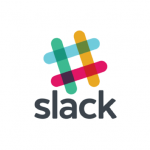 Slack is designed for companies that need real-time communication, but it is much more than a glorified chat client.
Slack is designed for companies that need real-time communication, but it is much more than a glorified chat client.
Slack lets you store files and integrate other useful applications as well.
Channel-Based Chatrooms
Slack knows that some conversations aren’t meant for the whole team, so they’ve implemented a channel feature like the ones you’d find on mIRC or, more currently, on apps such as Discord.

You can create channels for each team, for each project or for anything you want to.
There’s no limit for the amount of channels you can create.
You can share files within each specific channel as well.
Your team members can join and leave channels whenever they see fit — there’s no need to stay in for the entire conversation.
If you want to look up a past conversation, Slack lets you access each channel’s history.
Even if you’ve already left the channel or archived it, Slack keeps track of your conversation history.
Share Your Work — and Yourself
To go even further in avoiding boring meetings, Slack lets you voice or video chat.
If you want to make sure work’s actually being done, Slack lets users share their screen.
Integrated Tools
In order to increase Slack’s functionality you can integrate over 1.500 apps into your client.
If you can’t find an app that does what you want it to, you can always build your own.
Slack lets users access their API.
You can integrate into Slack apps such as Google Drive, Dropbox, Evernote, Asana, GitHub, Trello and plenty more.
Pricing
Slack offers three tiers of pricing.
There’s an unlimited free tier (with very restricted functionality), a $6.67 per user/month (when billed annually) Standard tier, or the more expensive $12.50 per user/month Plus tier.
Slack only bills you per team member that actually uses it in a given month.
If you’re unsure which option is the best for you, let’s see what they have to offer:
Free
- Searchable most recent 10.000 messages 10 third-party or custom integrations One-on-one only video and voice calls 5GB total file storage Standard support
Standard
- Unlimited searchable messages Unlimited third-party or custom integrations External access to shard channels, single-channel guests and multi-channel guests Custom retention policies for messages and files Custom user groups to reach teams or departments Voice and video calls up to 15 participants Interactive screen sharing Message highlights Search for relevant people, channels and files 10GB per team member total file storage Priority support
Plus
- Everything Standard offers Corporate exports for all messages User provisioning and deprovisioning Real-time active directory sync with OneLogin, Okta and Ping 20GB per team member total file storage 24/7 support with four-hour response time 99.99% guaranteed uptime
Final Verdict
Pros
- Integration with over 1.500 applications Straightforward and simple to use Free version
Cons
- Too simplistic without the right integrations. Other software does the same and more straight out-of-the-box
Final Comparison
Now that you know about the specifics of the more commonly used project management tools you’ve probably made up your mind regarding which one is the best for you.
If you haven’t, let’s look at what tool is best for what function. Keep in mind that there is no “best” tool.
Each project management tool offers different strengths that might or might not be needed for your projects.
Cheapest Option
If price is your main concern when choosing your project management tool there are a few options you can consider.
Asana, Trello, Basecamp and Slack offer you free non-trial options. If you qualify for it, Basecamp’s free version has no differences from paid ones.
If you don’t qualify for Basecamp’s discounts then Asana and Trello both offer similar features.
Slack may also be worth considering.
You should consider trying them all, since it won’t cost you a dime.
However, if you’re willing to spend some cash, but still want the cheapest option, then you should consider Slack ($6.67 per user/month), Microsoft Project ($7.00 per user/month), Easy Redmine ($29 per month for up to 25 users) and Jira ($10 for up to 10 users).
You have to do the math to figure out how many users you’ll have and how much it would cost you.
If you’re worried about how your team size will skyrocket costs, remember that Basecamp always costs $99 per month, regardless of how many users you’re going to have.
| Tool | Cheapest Paid Option |
| Slack | $6.67 |
| Microsoft Project | $7.00 |
| Asana | $9.99 |
| Trello | $9.99 |
| Jira | $10.00 |
| Easy Redmine | $29.00 |
| Basecamp | $99.00 |
Most Comprehensive Tool

 If you want a project management tool which does a little bit of everything, which one should you consider?
If you want a project management tool which does a little bit of everything, which one should you consider?
Due to the amount of plugins available and to the features already present out-of-the-box, Jira and Easy Redmine are the obvious choices. Microsoft Project can be worth considering as well, but it’s not as deep as Jira or Easy Redmine.
If you’re looking for a tool which will provide you different types of functionalities then you shouldn’t consider Slack or Basecamp.
 Best Tool for Cooperative Projects
Best Tool for Cooperative Projects
If you’re projects are heavily reliant on teamwork and constant feedback, then the clear winner is Basecamp, closely followed by Asana and Trello.
Slack can be considered as well, but Basecamp does everything Slack does and in a better way.
 Best To-Do List Creator
Best To-Do List Creator
If what you really need is a to-do list creator, with the options to change your priorities and to know what’s being worked on, then Asana is probably your best bet.
Trello might be worth considering as well. Kanban boards will help you increase your workflow, and Asana and Trello are the best at it.
 Best Tool for Large Teams
Best Tool for Large Teams
There’s really no arguing about it: Jira is the best tool for teams with hundreds of members.
The price options they offer are an indicator that they’re used to work with large teams. That brings us to…
Best Tool for Software Developers
The answer is Jira again.
Its bug squashing capabilities as well as the fact that it plays great with enormous teams makes it the perfect tool for big offices focused on software development.
Jira lets you test and quickly deploy your builds without a hassle.
Comparison Table
Let’s look comparatively at each software’s features.
Remember that most unavailable features can be added to almost any software through the use of plugins.
| Scrum Boards | Kanban Boards | Agile | Time Tracking | Native Chatrooms | Plugins | Free Version | |
| Asana | Yes | Yes | Yes | No | Yes | Yes | Yes |
| Trello | Yes | Yes | No | No | No | Yes | Yes |
| Jira | Yes | Yes | Yes | Yes | No | Yes | No |
| Easy Redmine | Yes | Yes | Yes | No | No | Yes | No |
| MS Project | Yes | Yes | Yes | No | No | Yes | No |
| Basecamp | No | No | No | Yes | Yes | Yes | Yes |
| Slack | No | No | No | No | Yes | Yes | Yes |
Conclusion
Even after reading several comparisons we know that the choice can be overwhelming.
It’s okay to change the program you use if you find out that the one you thought was best for you actually wasn’t.
At the end of the day you can read about what seems to be the perfect tool just to find out that you don’t actually enjoy working with it.
The only sure way to know which tool is best for you is to pick the one that seems more appropriate and to try it out.
If you find out you don’t like it, use the one that looked like the second best.
Don’t forget that you have to use each tool for a while so you actually get a feel for them and unlock all of their possibilities.
Which project management tool did you decide to go with?
We hope we managed to help you decide what’s the best project management tool for you and your team.
Let us know in the comments below.
Need support with your software development?

Peter Kudlacek
CEO
Peter Kudlacek is a CEO at Apro Software . He has been in software development business for the last 15 years. He succesfully built several IT companies.

